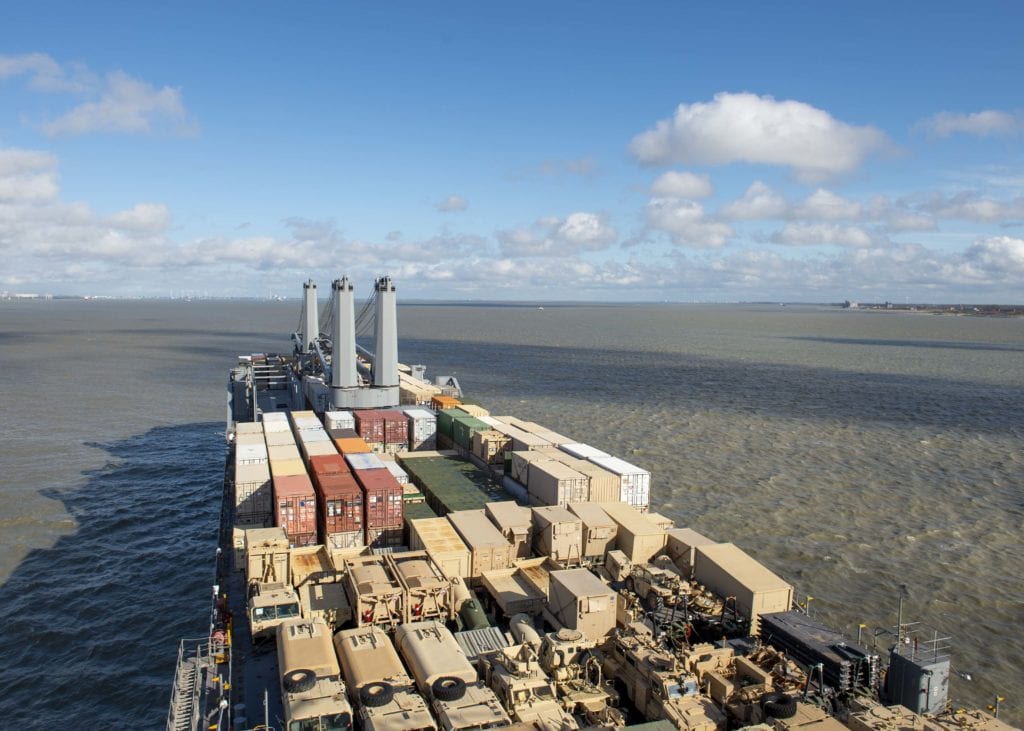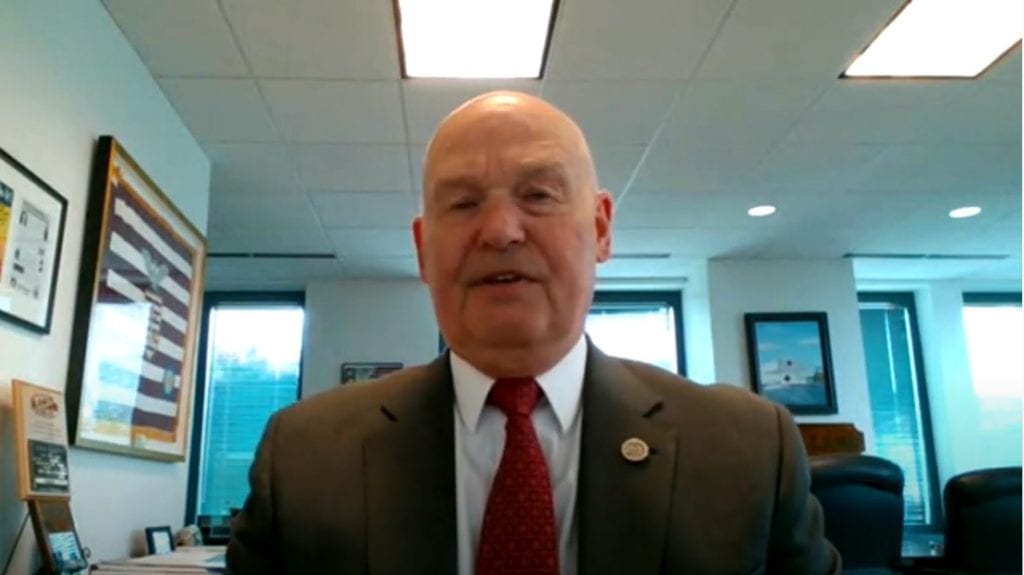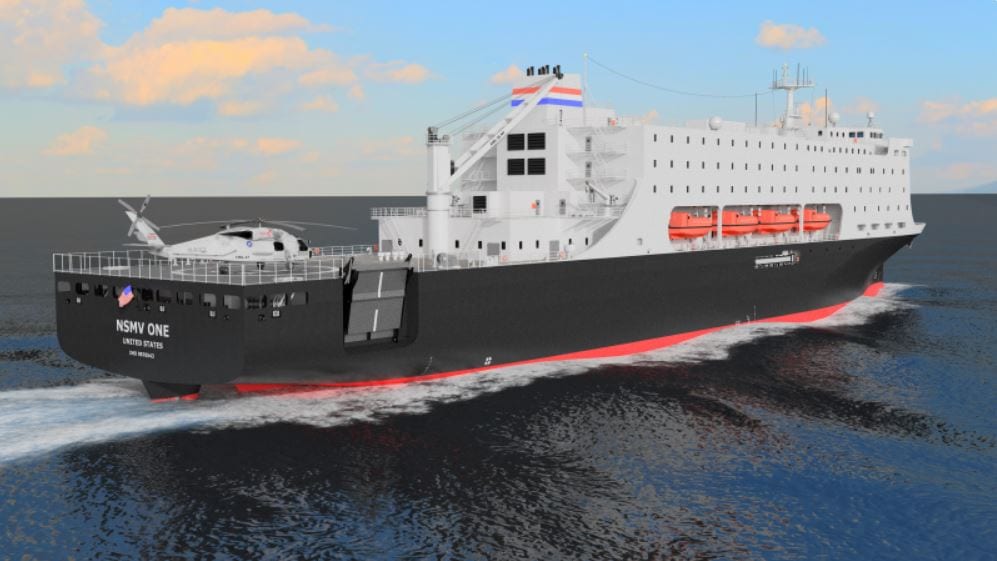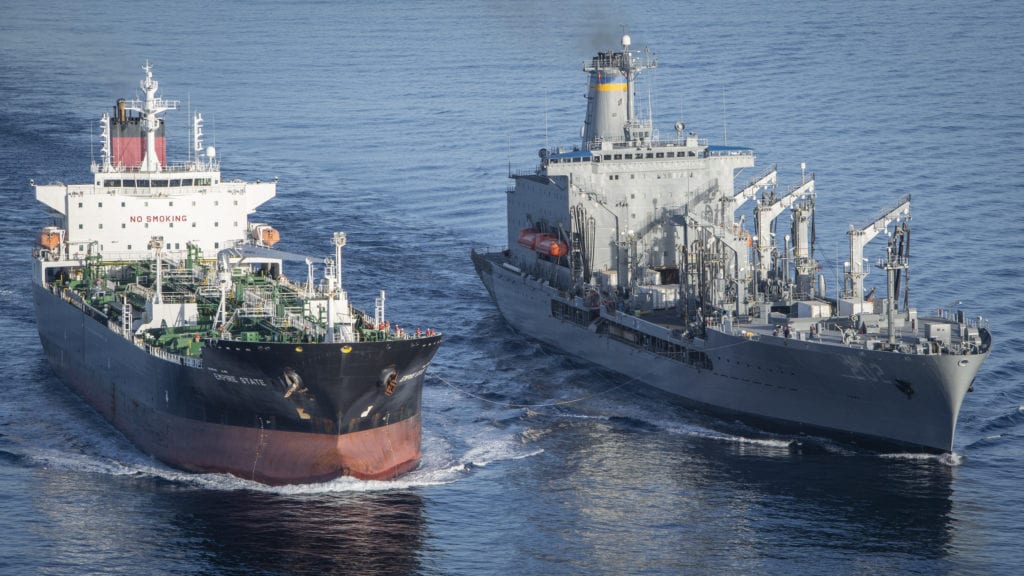Jones Act Defenders Challenge Economic Arguments for Repealing Century-Old Law
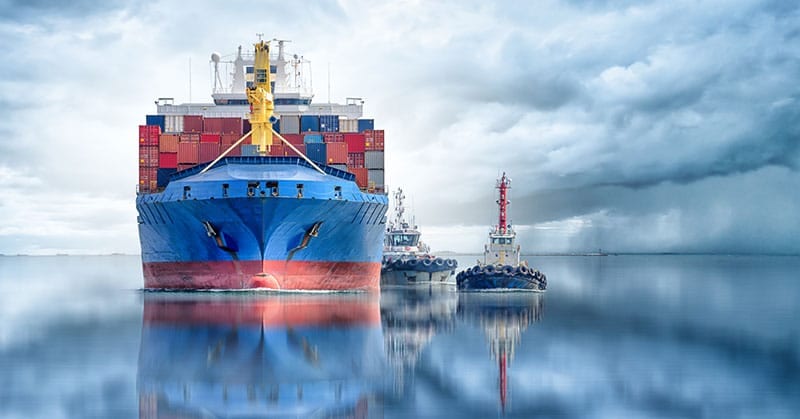
ARLINGTON, Va. — The 100-year-old Jones Act is far from an outdated law that keeps shipping prices high and hurts the nation’s economy, a panel of maritime policy experts argued on April 14.
“The biggest misconception of the Jones Act is the cost impact, the final cost to delivered goods,” John McCown, founder of Blue Alpha Capital, a maritime financial services firm, said on a webcast for Navy League’s Sea-Air-Space 2020: Virtual Edition. “Many of the critics have distorted what that number is, cherry picked it, taken it out of context,” McCown added.
To register and then watch this Sea-Air-Space 2020: Virtual Edition webinar live online, click here.
The Jones Act — also known as the Merchant Marine Act of 1920 — bars foreign-built, foreign-owned or foreign-flagged vessels from conducting coastal and inland waterway trade within the United States and between the United States and some of its territories such as Puerto Rico. The law also generally applies restrictions that effectively prohibit Jones Act-compliant ships from being overhauled at foreign shipyards. Ship crews must be composed of U.S. citizens or legal U.S. residents.

Opponents say it’s time to repeal the law because it has led to higher shipping costs, which pass along higher prices to vendors, retailers and consumers. They also maintain higher costs have driven the commercial shipbuilding industry overseas, leading to a smaller pool of qualified U.S. merchant mariners.
That claim has turned the Jones Act into a scapegoat for “all sorts of economic ills,” McCown said. He noted that after Hurricane Maria devastated Puerto Rico in 2017, critics claimed the Jones Act was strangling Puerto Rico’s economy and, without the law, there would be a 15% drop in consumer prices. Such a price cut “translates to $9 billion a year,” which, McCown said, was a ludicrous estimate many times the total annual revenue of the Jones Act.
“The biggest misconception of the Jones Act is the cost impact, the final cost to delivered goods. Many of the critics have distorted what that number is, cherry picked it, taken it out of context.”
John McCown, founder of Blue Alpha Capital
U.S. Navy and Coast Guard officials have defended the law, saying that without it, there would be no pool of U.S. noncombat ships — or trained American seafarers to man them — in a war or other national emergency. If cost becomes the deciding factor in maritime trade, leading to elimination of the Jones Act, then commerce on U.S. coastal waters and internal waterways like the Mississippi River would be taken over by another nation, most likely China, the second-biggest economy and shipbuilder in the world, and a “Great Power” competitor, proponents of the law argue.
Given medical supply shortages in the current COVID-19 pandemic, dependence on foreign vessels and foreign crews could pose not just a national security risk, but economic and homeland security risks if the U.S. remains dependent on foreign supply chains, especially for medical equipment and pharmaceuticals, noted former Oklahoma Rep. Ernest Istook, a senior fellow at the Frontiers of Freedom, a conservative think tank. “If they decide to do something that might cut us off, then we are at their mercy,” he added.
